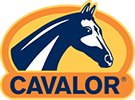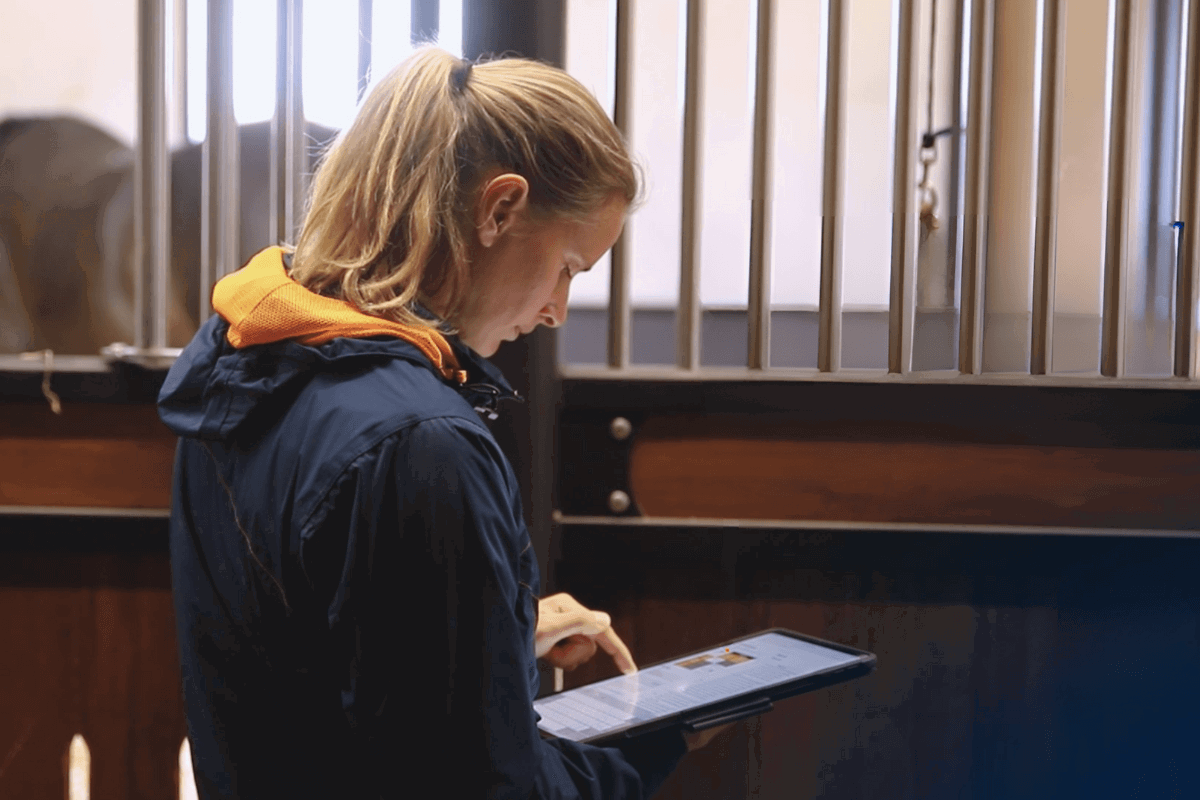Achieving and maintaining a healthy weight for your horse is essential for its welfare and performance. A horse that is at the right weight has just the right amount of energy, performs at its best, and presents a lower risk of suffering health problems. But what is a good weight exactly? And more importantly, how do you know if your horse is at that weight?
Why is a healthy weight important?
‘Feed as you need’ – give your horse what it needs; no more, no less. That may sound logical, but in practice it is often difficult to estimate how much feed your horse really needs.
Drawing up tailored rations always starts with working out how much your horse weighs. You then know how much roughage and how much concentrate feed it needs on a daily basis. If you dispense food based on an incorrect estimate, you may end up giving your horse too little or too much energy – and that can lead to health problems or a loss of performance over time.
Use measurements to establish the weight
You can determine your horse’s weight in several ways:
- Use weigh scales. This is the most accurate method.
- Use a weighbridge. This is a handy option during transport or when visiting a clinic.
- Use a measuring tape and formula. If you’ve not got any scales or a weighbridge available, you can estimate your horse’s weight by measuring its girth. Measure your horse’s chest girth and body length and enter the data in the Cavalor Weight Calculator: https://cavalor.com/weight-calculator/
Why are accurate measurements so important?
The amount of concentrate feed your horse needs is often expressed as a value per 100kg of body weight. That’s because horses’ body weights can vary significantly. Think, for example, of a small farabella or a large draft horse. They’re both horses, but need different quantities of feed.
Take a practical example. Suppose you think your horse weighs 500kg, but it actually weighs 600kg. You would then be giving them too little feed when it comes to roughage and concentrate feed.
| Horse weight | Hay | Cavalor Strucomix Original |
| 500kg | 7.5kg | 1.5kg |
| 600kg | 9kg | 1.8kg |
Recommendations for Strucomix Original: We recommend a minimum of 300g to a maximum of 700g per 100kg of body weight per day.
A good rule of thumb is to provide at least 1.5% of the horse’s body weight in hay.
Weight isn’t everything. Also work out the Body Condition Score
Although the weight is an important indicator, it doesn’t tell the whole story. A horse can weigh 600kg, for example, look in ‘good’ condition, and yet still be overweight. That’s why it’s also important to measure the Body Condition Score (BCS). This method assesses the fat covering at six specific areas on the body, including the neck, ribs and tailhead.
By carrying out regular checks, you can make any adjustments in good time – and even before a weight loss or gain becomes a problem.
Check out how you can assess your horse’s BCS correctly:
How can I know how much my horse needs to eat?
The golden rule is to feed based on the desired weight.
But what does that mean in reality? Suppose your horse weighs 600kg, but is overweight. The target weight is 550kg. You should then feed accordingly based on the target weight:
| Horse weight | Hay | Cavalor Strucomix Original |
| 600kg | 9kg | 1.8kg |
| 550kg | 8kg | 1.6kg |
Always feed based on the target weight, not the actual weight.
Tip: Be careful when it comes to young horses
Young horses have different feeding requirements as they are still growing. Make sure you use feed tailored to their phase of development. At Cavalor, we always take the expected adult weight of foals, yearlings and young horses into account in the composition of our feeds. Always look at the expected adult weight of your foals when determining their feed quantities.
Take a look at our feeds for breeding here: https://cavalor.com/breeding-2/
Prevention is better than cure
Achieving a healthy weight is more than ‘simply feeding them less’ or ‘giving them more exercise’. It all starts with insight:
- What is your horse’s ideal weight?
- How much does your horse currently weigh?
- What is its BCS score?
- How much feed does your horse actually need?
Adopting this approach will ensure your horse stays fit – both on the outside and from within.
Additional support with the right feed
Sometimes, horses need a bit more support with specific types of feed.
Cavalor Silhouette is a good choice for horses that are overweight or put weight on quickly. This high-fibre muesli has been specially developed for plain breeds, easy keepers and horses that are prone to rapid weight gain. A horse’s breed often plays a role in its feeding needs, too. Coldbloods, for example, often need less energy and can gain weight rapidly, while thoroughbreds need larger amounts of feed to maintain their weight.
Cavalor Silhouette supplies all the essential nutrients such as proteins, vitamins and minerals, but is low in sugar (5%) and starch (6%). This helps the horse retain muscle while reaching a healthy weight.
If your horse struggles to gain weight or is lacking stamina, Cavalor WholeGain can help. It is a high-fat, concentrated balancer that adds fat to the feed ration and provides important nutrients such as B vitamins and minerals. Wholegain safely stimulates weight gain, contributes to a fit horse, provides a shiny coat thanks to the balanced ratio of omega-3 and omega-6 fatty acids, and boosts the immune system.
The right feed really can make a difference – provided you know how much your horse really needs.


